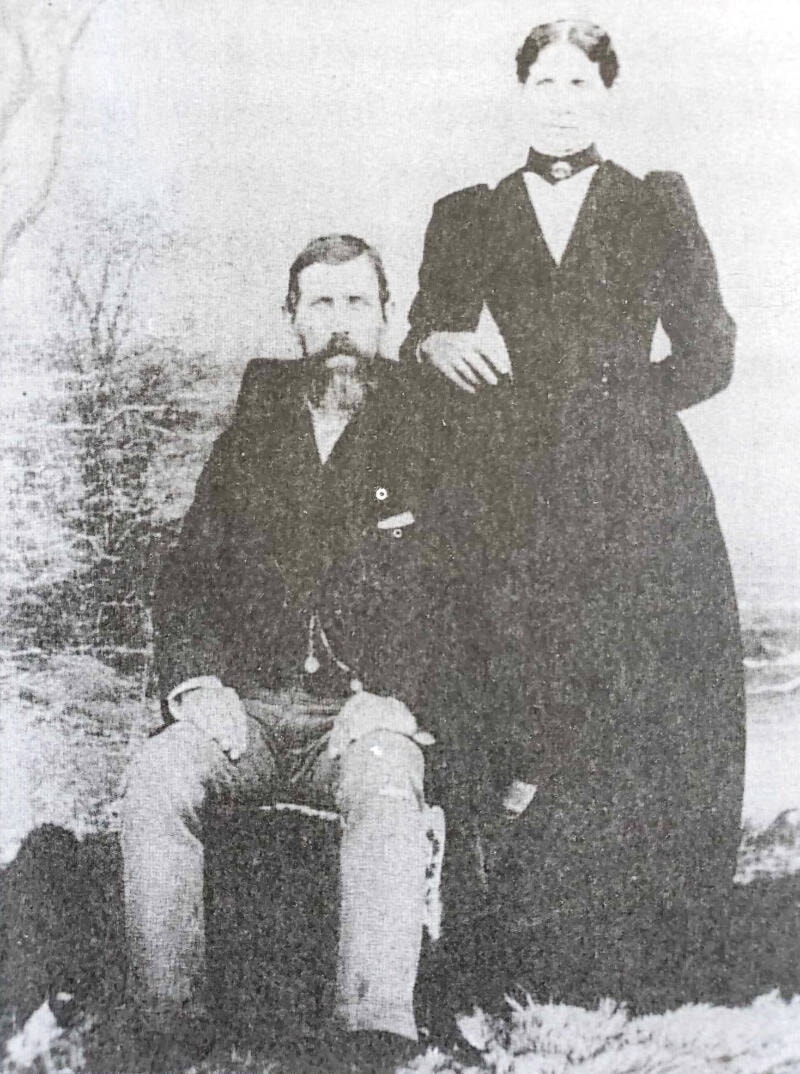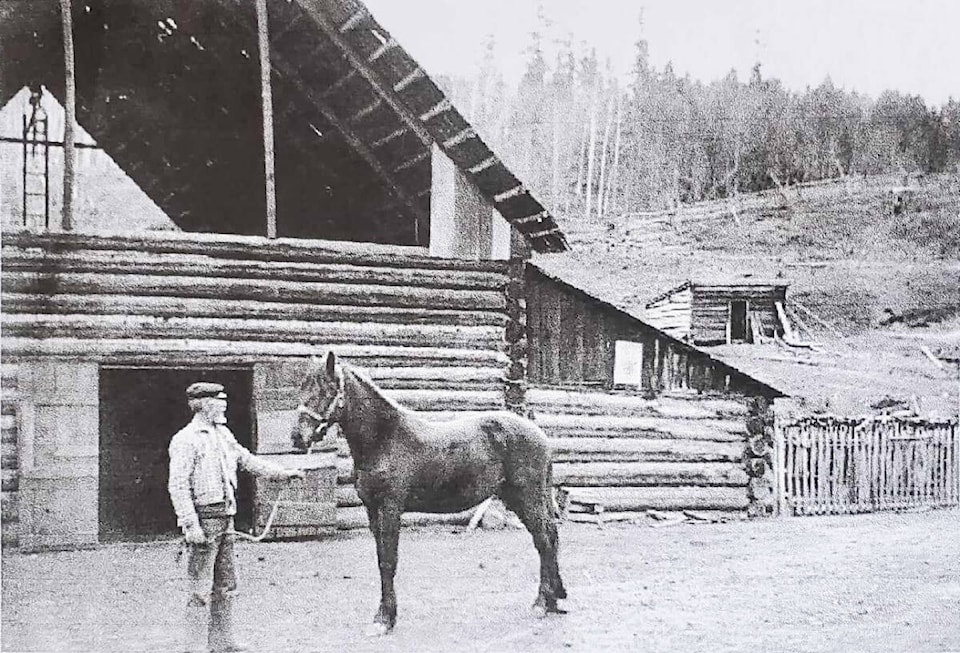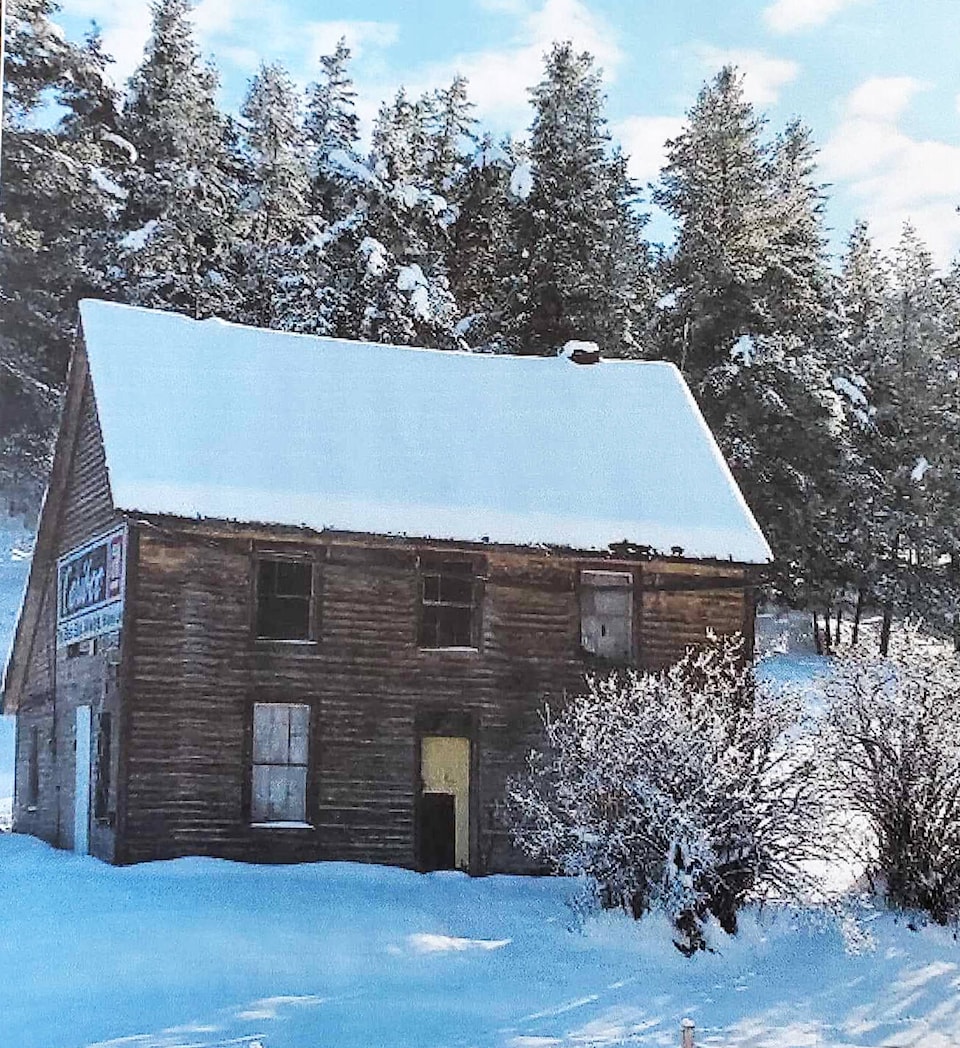Barry SALE
Special to the Tribune
About two kilometres north along Highway 97 from the Fort Alexander cairn site, one can see a sadly neglected two-storey frame house beside the road. It has been vacant for many years now, and it is currently being used as an advertising billboard, with a large GM sign on the north side wall, and a similar sized Ford sign on the south wall. This place is the once busy and popular 188 Mile roadhouse, run by William Johnson Anders and his family.
The history of this building all began in the summer of 1884, when William Pinchbeck, the land owner of the large and very successful ranch at Williams Lake, returned to Sheffield, England to be married. He persuaded his sister Annie and her husband, William Anders, as well as a niece, Emma, to return with him and his new wife to the Cariboo. Anders was a hard worker who had many talents. In his youth, he had been a champion walker and athlete. He was also a master shoemaker who had once been commissioned to design and produce a pair of dress boots for King Edward VII.
When the group arrived back at Williams Lake, Pinchbeck set about constructing two new two-storey frame buildings, an eight-bedroom roadhouse on the upper part of his ranch (in the area currently known as the dairy fields), and an elegant four-bedroom modern residence, called the Lake House, for his new bride, Alice, at the lower end of the ranch, where the curling rink stands today.
Pinchbeck’s new roadhouse operated as a stopping place for commercial travellers in the summer, and as a boarding house in the winter, mainly for miners from the goldfields who wanted to spend the winter in a more temperate climate. One of the rooms was always reserved for Judge Begbie, who stayed there on his regular assize (periodic or at intervals) court circuit through the region. Annie Anders took on the management of this roadhouse, capably assisted by Angelique Dussault from Dog Creek, who later married Bill Lyne and established the 170 Mile roadhouse. William Anders ran a store associated with the roadhouse, also assisted by Angelique, and he operated the saloon and kept the books for the entire operation.
When William Pinchbeck died in 1892, his land holdings, stock and equipment were sold off at auction to pay off his ceditors. Annie and William left Williams Lake to purchase a place of their own. Anders pre-empted a good looking 320-acre piece of land in the Alexandria district in 1895, and immediately hired a builder to begin work on a large new stopping house right beside the Cariboo Wagon Road. It was finished in 1896, a two-storey well built structure, constructed by master builder John Mackin. The 188 Mile House soon became a regular stop for freighters, travellers, and BX Stage coaches.
The building has a “salt box” design where the back side of the roof is longer than the front. The front door led to a long hallway with an ornate carpeted staircase leading upstairs to four guest bedrooms and a separate large communal sleeping area reserved for single men and wagon drivers. One of the four guest bedrooms became known as the “Pauline Johnson Room” because that famous B.C. poet slept there while on a tour through the Cariboo in 1904.
Downstairs on the main floor, a large ladies’ parlour was located on one side of the hallway, while on the other side, there was a bar room, an office, and a small area that housed the telegraph system. At the rear of the building was a spacious kitchen and dining area.
Soon after the roadhouse began operating, Annie, who was an astute business woman, took the opportunity to build and open a small store just to the north of the main building. The First Nations people in the area especially made extensive use of this little store, trading furs and leatherwork for groceries and hardware. It is said that the most popular item sold out of this side business was Annie’s home made boiled sugar candies. In the early 1960s this small building was moved across the highway to become a chicken house behind the new bungalow style ranch house.
William and Annie had no children. In 1903, Annie’s great nephew William (Billy) Broughton, came over from Yorkshire, England, to work at 188 Mile. A year later, Billy’s fiancé, Ada Littlewood, joined him. They were married and had a son, William Junior, but before he was even a year old, his father died. Ada remained at 188 Mile, where she continued to operate the roadhouse while Annie ran the store.
Over the years, William Anders gradually added more and more land to his holdings. He enjoyed hunting and gained quite a reputation as a crack shot. One story tells about him killing several grouse with a single shotgun blast. Behind his back, the locals began to refer to him as “Buckshot Anders.” It came as quite a surprise to Anders when one day, a salesman came to the door asking to speak to “Mr. Buckshot.” The nickname persisted, so much so in fact that the substantial ranch which includes all of the Anders land holdings was officially registered as the Buckshot Ranch.
In 1913, Ada was remarried to Frank Aiken, a B.C. provincial policeman. They moved to Lillooet and then Clinton, and they had two sons, Edward and Leslie. When William and Annie Anders passed away in the 1920s, this family inherited the 188 Mile roadhouse and ranch, and they returned to the area. By this time, however, the roadhouse business waned, and the building became the family home.
By the 1940s, Edward Aiken and his family were living in the old roadhouse. In 1955, they built a new ranch house across the highway and moved into it. After that, except for a few short term rentals, the old roadhouse remained empty. The Buckshot ranch was sold out of the family in July 1991 and the 188 Mile house now sits next to the modern highway, a deteriorating shell, and another reminder of the rich and colourful history of our Cariboo area.
I found information for this column in the writings of Branwen Patenaude - Trails to Gold, Volume 2.
READ MORE: HAPHAZARD HISTORY: Peter Skene Ogden
READ MORE: HAPHAZARD HISTORY: The Othello Tunnels
Don’t miss out on reading the latest local, provincial and national news offered at the Williams Lake Tribune. Sign up for our free newsletter here.


